- NEW: "Flying pilot" was in "initial operating experience" to fly a Boeing 777, NTSB chair says
- NEW: The "instructor pilot" was serving in that capacity for the first time, official adds
- NEW; The plane's landing gear first struck a seawall, followed by tail, she adds
- NTSB chair Deborah Hersman rejects pilot union claims, says information holds rumors at bay
San Francisco (CNN) -- Surviving passengers have spoken, recalling how an uneventful 10-hour flight gave way to a horrific few minutes in which Asiana Airlines Flight 214 crashed, spun and burned.
On Tuesday, the head of the National Transportation Safety Board told reporters about what the person piloting the plane and the "instructor pilot" sitting next to him had told investigators about their experience over the years and on that fateful day.
The "flying pilot" -- as the federal agency's chairman, Deborah Hersman, referred to him -- was a veteran pilot with nearly 10,000 hours of total flying time, though he was in his "initial operating experience" in flying a Boeing 777 like the one that crashed Saturday at San Francisco International Airport.
He had flown 10 legs and had about 35 hours of flying time with the 777, which put him about halfway through that required training of 20 legs and 60 flight hours, when the plane went down, Hersman said.
When that happened, sitting beside him was the instructor pilot. Saturday's flight to northern California was the first time he had traveled with the flying pilot and the first time he had been an instructor pilot, according to Hersman.
These two were among four pilots -- three of whom were in the cockpit at the time of the crash, while one was in the cabin -- whom authorities interviewed Monday and Tuesday, Hersman told reporters.
Investigators hope these interviews, and others, will shed light on why the giant jet crash-landed.
"All of the crew members have been very cooperative and very forthright with our team," Hersman said.
The plane's main landing gear was the first part of the plane to strike the seawall near the runway at the airport along San Francisco Bay, followed by the the plane's tail, Hersman told reporters Tuesday.
The pilots did not undergo drug or alcohol testing after Saturday's crash landing, Hersman said. The United States does not have "oversight" of foreign-based operators or their crews, she said.

 Asiana Airlines Flight 214 sits just off the runway at San Francisco International Airport on Sunday, July 7, in a handout photo from the National Transportation Safety Board. The Boeing 777 coming from Seoul, South Korea, crashed on landing on Saturday, July 6.
Asiana Airlines Flight 214 sits just off the runway at San Francisco International Airport on Sunday, July 7, in a handout photo from the National Transportation Safety Board. The Boeing 777 coming from Seoul, South Korea, crashed on landing on Saturday, July 6. 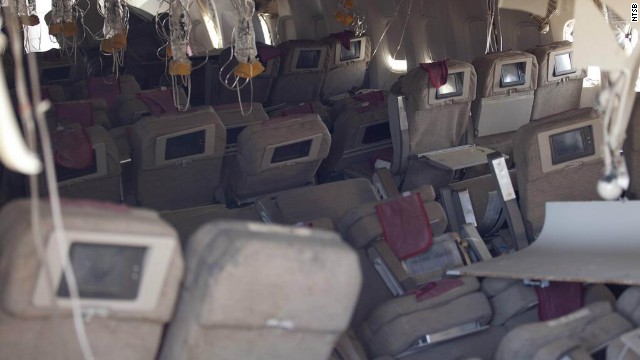 On July 7, the NTSB released this photo showing the inside of the aircraft.
On July 7, the NTSB released this photo showing the inside of the aircraft. 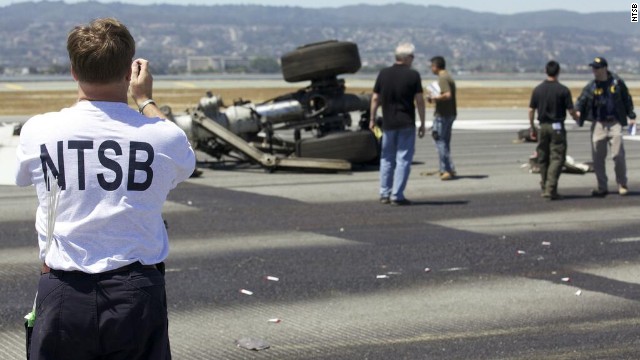 An investigator photographs part of the landing gear at the crash site in a handout released on July 7. The NTSB's preliminary assessment of the plane's cockpit and flight data recorders shows the flight was coming in too slow and too low.
An investigator photographs part of the landing gear at the crash site in a handout released on July 7. The NTSB's preliminary assessment of the plane's cockpit and flight data recorders shows the flight was coming in too slow and too low.  An investigator inspects the broken-off tail of the plane in a handout photo released July 7. The crash killed two people, injured 182 and forced the temporary closure of one of the country's largest airports.
An investigator inspects the broken-off tail of the plane in a handout photo released July 7. The crash killed two people, injured 182 and forced the temporary closure of one of the country's largest airports. 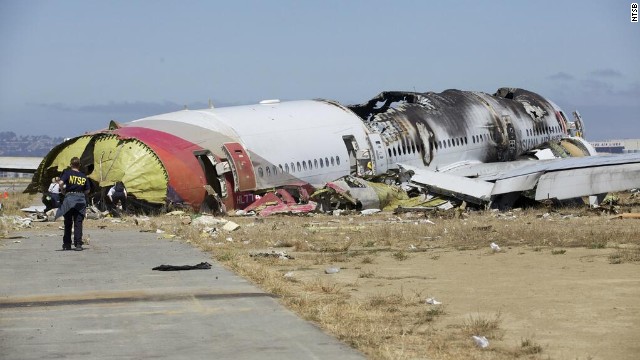 An investigator stands near the tail of the plane in a handout photo released on July 7. The NTSB has ruled out weather as a problem and said that conditions were right for a "visual landing."
An investigator stands near the tail of the plane in a handout photo released on July 7. The NTSB has ruled out weather as a problem and said that conditions were right for a "visual landing."  Investigators approach the crash in a handout photo released on July 7.
Investigators approach the crash in a handout photo released on July 7. 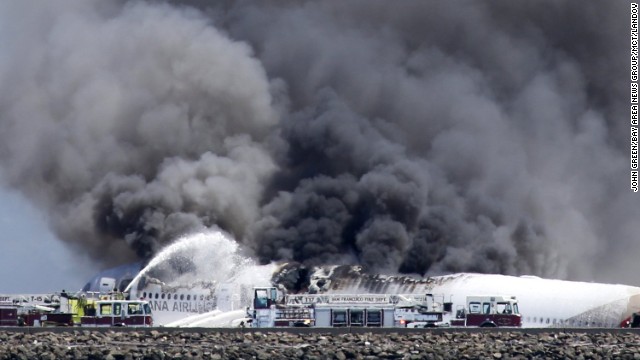 Fire crews attempt to quench the blaze on Saturday, July 6.
Fire crews attempt to quench the blaze on Saturday, July 6. 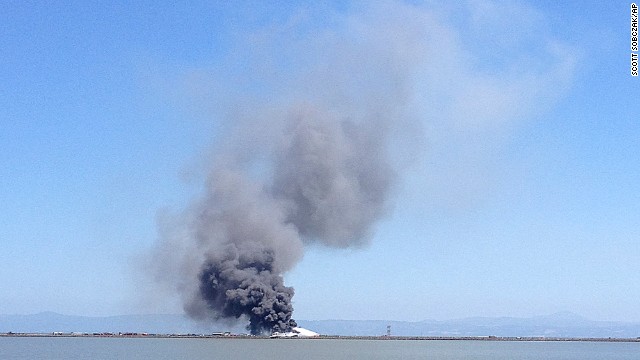 Smoke rises from the crash site across the San Francisco Bay on July 6.
Smoke rises from the crash site across the San Francisco Bay on July 6.  Asiana Airlines Flight 214 remains on the runway on July 6.
Asiana Airlines Flight 214 remains on the runway on July 6. 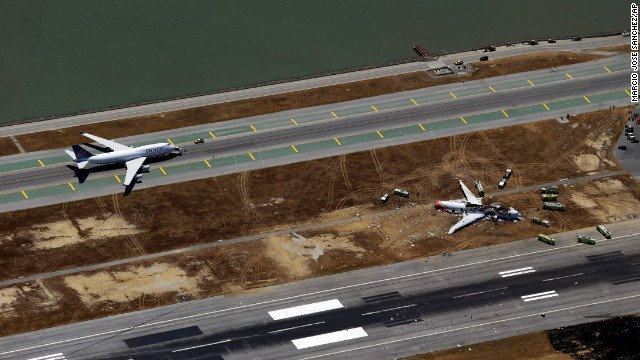 A plane sits on the runway on July 6 while emergency crews tend to the crash site.
A plane sits on the runway on July 6 while emergency crews tend to the crash site. 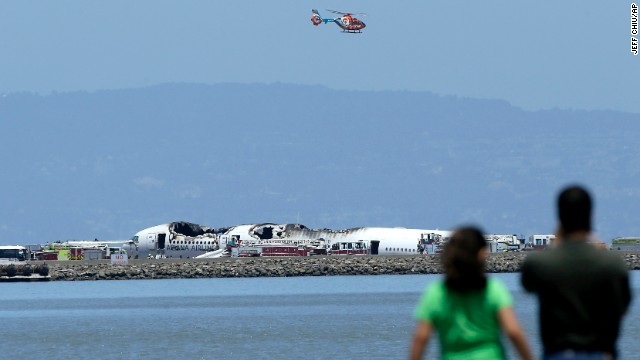 A helicopter flies above the wreckage on July 6 as people observe from across the waters of San Francisco Bay.
A helicopter flies above the wreckage on July 6 as people observe from across the waters of San Francisco Bay. 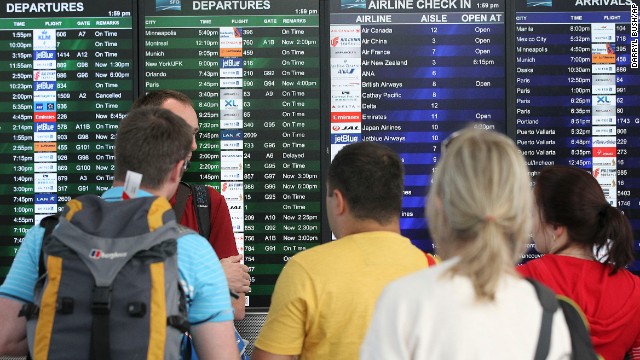 Travelers at San Francisco International Airport look at the departures and arrivals board after Asiana Flight 214 crashed on July 6. The airport, located 12 miles south of downtown San Francisco, is California's second busiest, behind Los Angeles International.
Travelers at San Francisco International Airport look at the departures and arrivals board after Asiana Flight 214 crashed on July 6. The airport, located 12 miles south of downtown San Francisco, is California's second busiest, behind Los Angeles International. 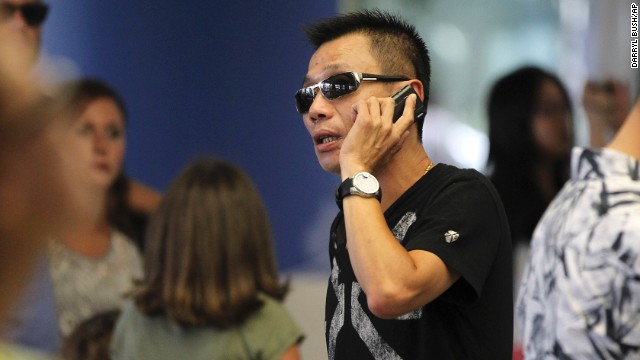 Kevin Cheng talks on his phone as he waits in the terminal after Asiana Airlines Flight 214 crash-landed on July 6. He said he was supposed to pick up students who were on board the flight from Seoul.
Kevin Cheng talks on his phone as he waits in the terminal after Asiana Airlines Flight 214 crash-landed on July 6. He said he was supposed to pick up students who were on board the flight from Seoul. 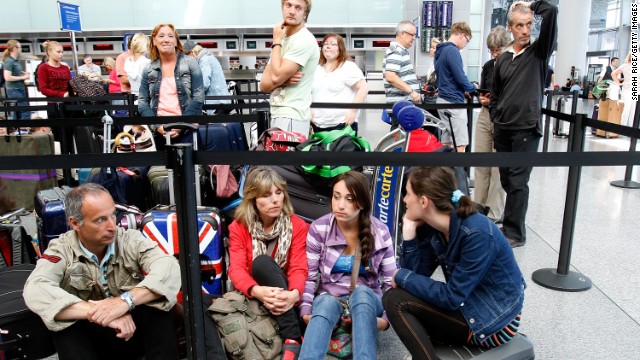 Passengers wait for the British Airways counter to reopen at San Francisco International Airport on July 6.
Passengers wait for the British Airways counter to reopen at San Francisco International Airport on July 6. 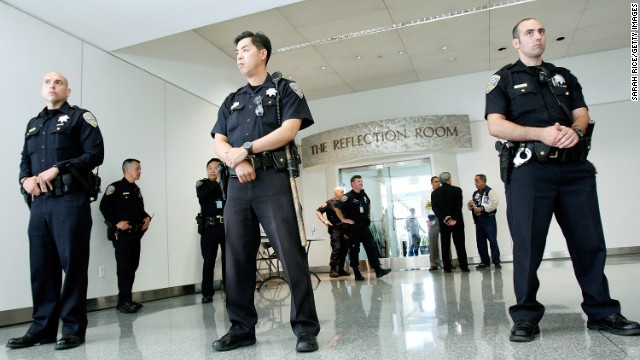 Police guard the Reflection Room at the San Francisco airport's international terminal, where passengers from Asiana Airlines Flight 214 were reportedly gathering after the crash landing on July 6.
Police guard the Reflection Room at the San Francisco airport's international terminal, where passengers from Asiana Airlines Flight 214 were reportedly gathering after the crash landing on July 6. 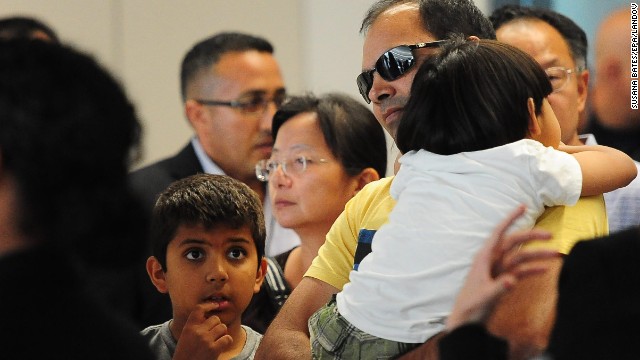 People are escorted from the Reflection Room at the San Francisco International Airport on July 6.
People are escorted from the Reflection Room at the San Francisco International Airport on July 6.  Traffic backs up on U.S. Route 101 South in San Francisco on July 6. The Bay Area airport was closed to incoming and departing traffic after the crash, according to the Federal Aviation Administration.
Traffic backs up on U.S. Route 101 South in San Francisco on July 6. The Bay Area airport was closed to incoming and departing traffic after the crash, according to the Federal Aviation Administration. 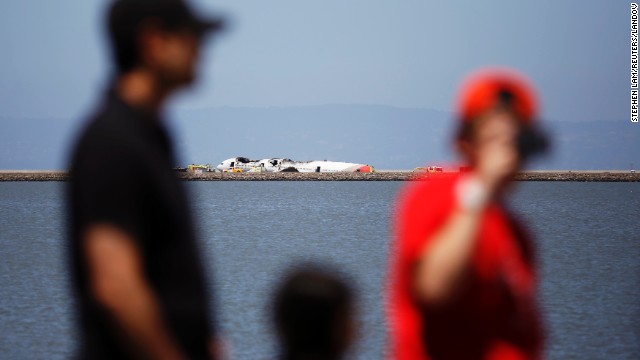 People look over the wreckage across a cove in San Francisco Bay on July 6.
People look over the wreckage across a cove in San Francisco Bay on July 6.  Deborah Hersman, chairwoman of the National Transportation Safety Board, speaks to the press at Reagan National Airport in Arlington, Virginia, before departing for San Francisco with an NTSB crew on July 6 to investigate the crash site.
Deborah Hersman, chairwoman of the National Transportation Safety Board, speaks to the press at Reagan National Airport in Arlington, Virginia, before departing for San Francisco with an NTSB crew on July 6 to investigate the crash site.  The San Francisco Giants observe a moment of silence for those killed and hurt in the crash before their baseball game on July 6 against the Los Angeles Dodgers at AT&T Park in San Francisco.
The San Francisco Giants observe a moment of silence for those killed and hurt in the crash before their baseball game on July 6 against the Los Angeles Dodgers at AT&T Park in San Francisco.  Crews comb the end of a San Francisco airport runway following the crash landing on July 6.
Crews comb the end of a San Francisco airport runway following the crash landing on July 6. 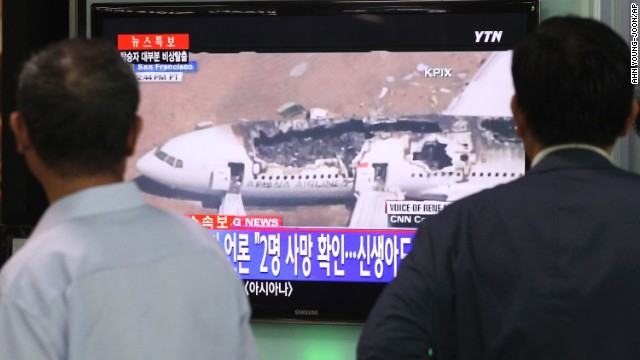 People in Seoul watch a news program reporting about the crash landing on July 6 in San Francisco. Asiana Airlines Flight 214 took off from Seoul earlier Saturday.
People in Seoul watch a news program reporting about the crash landing on July 6 in San Francisco. Asiana Airlines Flight 214 took off from Seoul earlier Saturday. 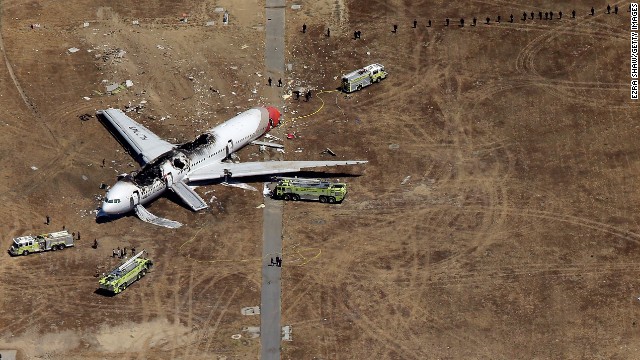 The plane crashed on July 6 around 11:30 a.m. (2:30 p.m. ET).
The plane crashed on July 6 around 11:30 a.m. (2:30 p.m. ET).  People walk past the wreckage of the plane's tail on July 6.
People walk past the wreckage of the plane's tail on July 6. 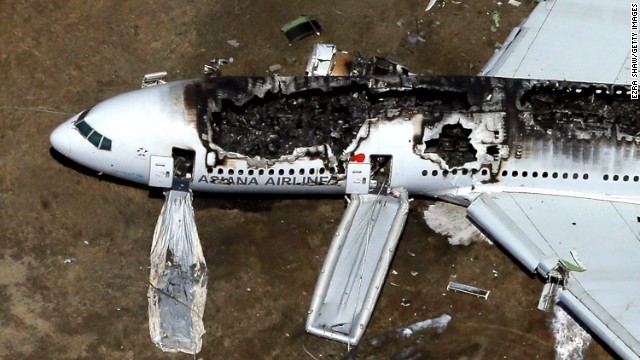 The burned-out plane remains on the runway on July 6. Passengers and crew members escaped down the emergency inflatable slides.
The burned-out plane remains on the runway on July 6. Passengers and crew members escaped down the emergency inflatable slides.  Rescue workers tend to the crash site on July 6.
Rescue workers tend to the crash site on July 6. 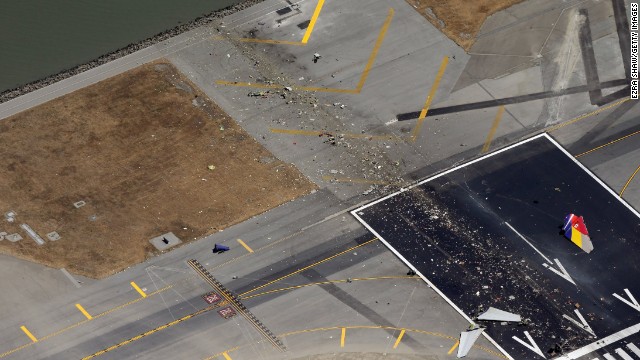 Debris litters the runway on July 6.
Debris litters the runway on July 6. 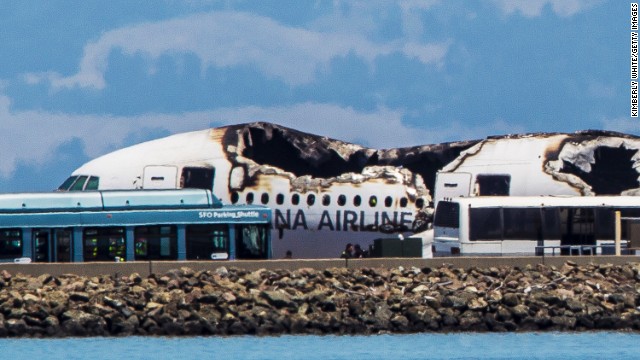 Airport shuttles arrive on the scene after the crash landing.
Airport shuttles arrive on the scene after the crash landing. 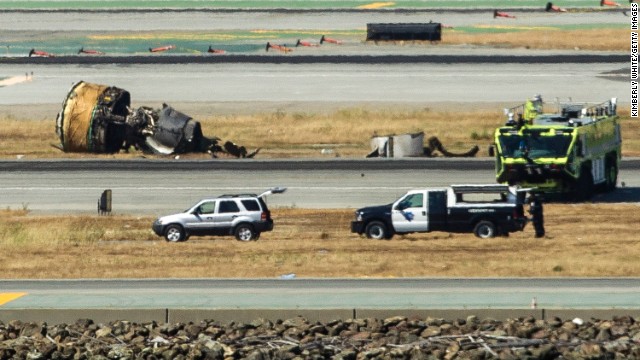 Wreckage from the Boeing 777 lies on the tarmac on July 6.
Wreckage from the Boeing 777 lies on the tarmac on July 6. 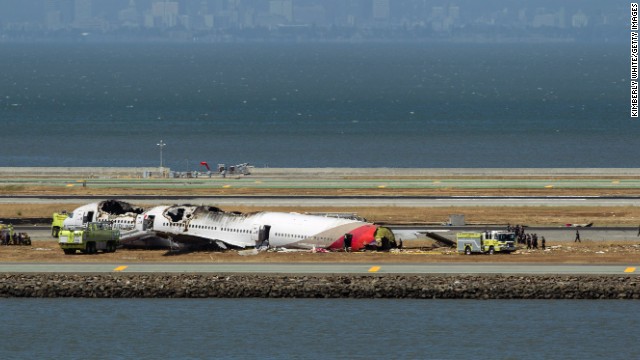 Crews surround the remains of the plane on July 6.
Crews surround the remains of the plane on July 6. 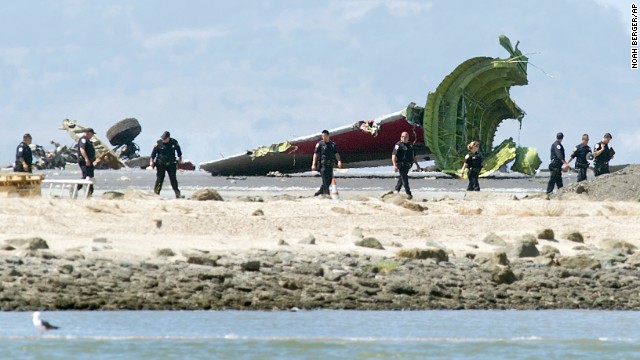 Investigators pass the detached tail and landing gear of Asiana Airlines Flight 214 on July 6.
Investigators pass the detached tail and landing gear of Asiana Airlines Flight 214 on July 6. 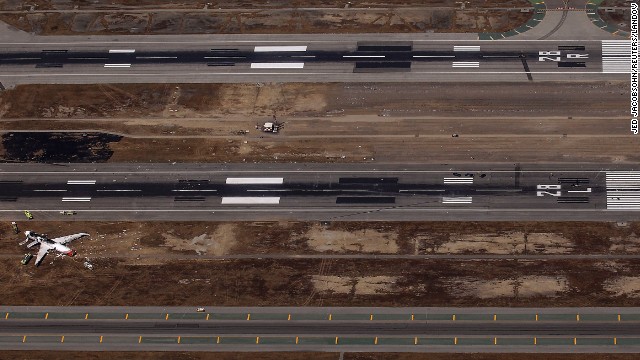 An aerial view shows the site of the crash landing between the runways on July 6.
An aerial view shows the site of the crash landing between the runways on July 6. 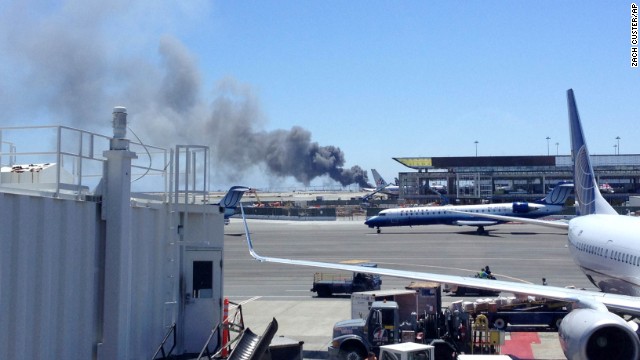 Smoke rises from the crash site on July 6 at the airport in San Francisco.
Smoke rises from the crash site on July 6 at the airport in San Francisco. 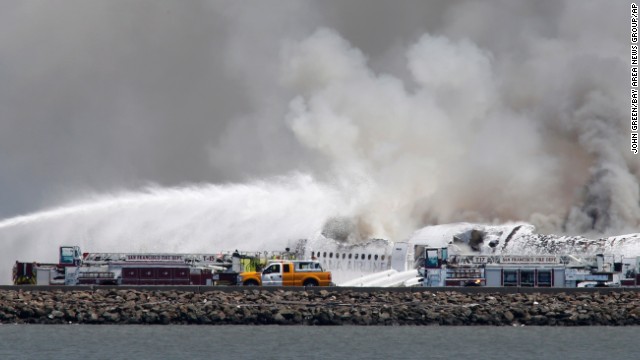 Fire crews work at the crash site at San Francisco International Airport on July 6.
Fire crews work at the crash site at San Francisco International Airport on July 6. 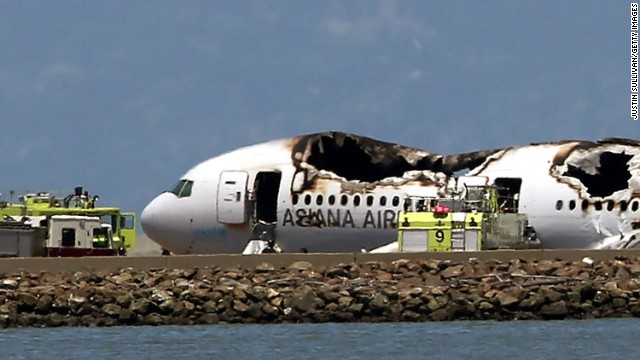 The Boeing 777 lies burned on the runway after it crashed landed on July 6.
The Boeing 777 lies burned on the runway after it crashed landed on July 6.  An aerial photo of the scene on July 6 shows the extent of the plane's damage.
An aerial photo of the scene on July 6 shows the extent of the plane's damage.  The burned-out plane sits surrounded by emergency vehicles on July 6.
The burned-out plane sits surrounded by emergency vehicles on July 6.  CNN iReporter Amanda Painter took this photo while waiting at the San Francisco airport on July 6. The entire airport has shut down and flights diverted to other airports.
CNN iReporter Amanda Painter took this photo while waiting at the San Francisco airport on July 6. The entire airport has shut down and flights diverted to other airports.  iReporter Val Vaden captured this photo while waiting in a departure lounge at the San Francisco airport on July 6. Val observed the billowing smoke and emergency responders' rush in.
iReporter Val Vaden captured this photo while waiting in a departure lounge at the San Francisco airport on July 6. Val observed the billowing smoke and emergency responders' rush in. 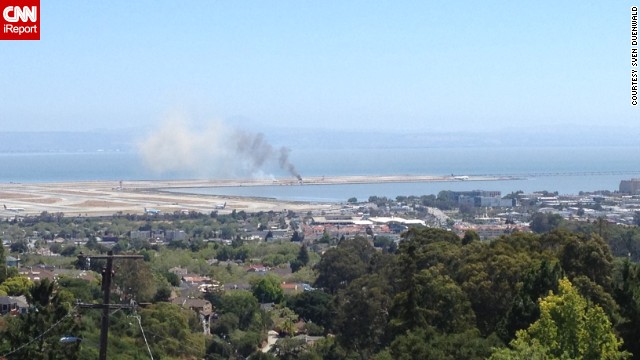 iReporter Sven Duenwald was at home on July 6 when he saw smoke rising into the air near the San Francisco International Airport.
iReporter Sven Duenwald was at home on July 6 when he saw smoke rising into the air near the San Francisco International Airport. 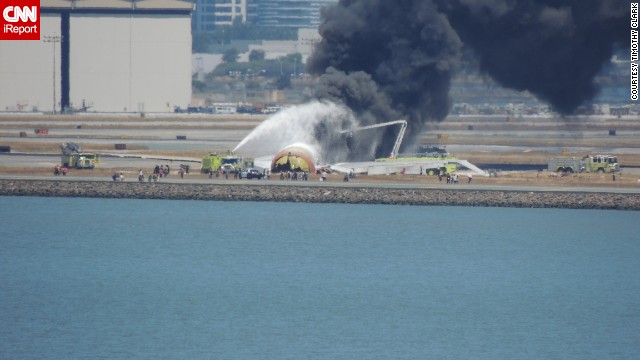 iReporter Timothy Clark was standing on the eighth floor of the Embassy Suites Airport Hotel when he heard a loud crashing sound from outside. "My daughter told me she heard a plane crash. I used my camera to get a clearer view and I could see a dust cloud. Then people running from the plane, then flames," he said.
iReporter Timothy Clark was standing on the eighth floor of the Embassy Suites Airport Hotel when he heard a loud crashing sound from outside. "My daughter told me she heard a plane crash. I used my camera to get a clearer view and I could see a dust cloud. Then people running from the plane, then flames," he said.  A photo provided to CNN by Eunice Bird Rah -- and shot by her father, who was a passenger on the plane -- shows flames and smoke bursting out of many of the aircraft's windows.
A photo provided to CNN by Eunice Bird Rah -- and shot by her father, who was a passenger on the plane -- shows flames and smoke bursting out of many of the aircraft's windows. 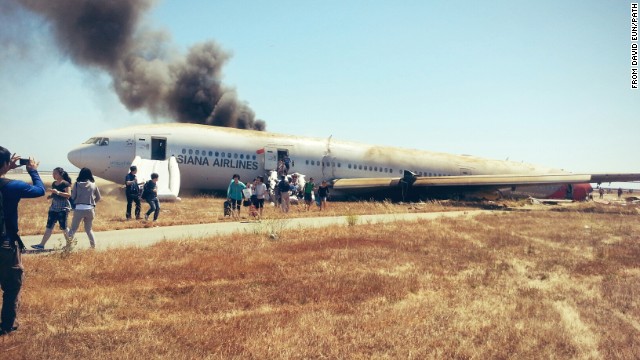 David Eun, a passenger on Asiana Airlines Flight 214, posted this image to Path.com along with the message, "I just crash landed at SFO. Tail ripped off. Most everyone seems fine, I'm ok. Surreal..." It was one of the first photographs taken after the crash.
David Eun, a passenger on Asiana Airlines Flight 214, posted this image to Path.com along with the message, "I just crash landed at SFO. Tail ripped off. Most everyone seems fine, I'm ok. Surreal..." It was one of the first photographs taken after the crash. Plane crash-lands in San Francisco
Plane crash-lands in San Francisco
Plane crash-lands in San Francisco
Plane crash-lands in San Francisco
Plane crash-lands in San Francisco
Plane crash-lands in San Francisco
Plane crash-lands in San Francisco
Plane crash-lands in San Francisco
Plane crash-lands in San Francisco
Plane crash-lands in San Francisco
Plane crash-lands in San Francisco
Plane crash-lands in San Francisco
Plane crash-lands in San Francisco
Plane crash-lands in San Francisco
Plane crash-lands in San Francisco
Plane crash-lands in San Francisco
Plane crash-lands in San Francisco
Plane crash-lands in San Francisco
Plane crash-lands in San Francisco
Plane crash-lands in San Francisco
Plane crash-lands in San Francisco
Plane crash-lands in San Francisco
Plane crash-lands in San Francisco
Plane crash-lands in San Francisco
Plane crash-lands in San Francisco
Plane crash-lands in San Francisco
Plane crash-lands in San Francisco
Plane crash-lands in San Francisco
Plane crash-lands in San Francisco
Plane crash-lands in San Francisco
Plane crash-lands in San Francisco
Plane crash-lands in San Francisco
Plane crash-lands in San Francisco
Plane crash-lands in San Francisco
Plane crash-lands in San Francisco
Plane crash-lands in San Francisco
Plane crash-lands in San Francisco
Plane crash-lands in San Francisco
Plane crash-lands in San Francisco
Plane crash-lands in San Francisco
Plane crash-lands in San Francisco
Plane crash-lands in San Francisco
Plane crash-lands in San Francisco
 Plane crash-lands in San Francisco
Plane crash-lands in San Francisco  Crash of Asiana Flight 214
Crash of Asiana Flight 214  'Sully' Sullenberger on crash landing
'Sully' Sullenberger on crash landing 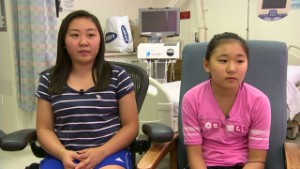 Young plane crash survivors speak
Young plane crash survivors speak Flight attendants hailed as heroes
Two of the 307 passengers and crew aboard Saturday's flight died on an otherwise normal day in northern California, after the rear of their plane struck the edge of the runway, severing the tail, sparking a fireball and sending the giant jet spinning until it finally stopped.
Girls killed in crash were headed for camp
Authorities transported 182 others to local hospitals.
Some of them were still hospitalized Tuesday, including four adults and one child in critical condition at San Francisco General Hospital who were suffering from internal bleeding, fractures and spinal cord, abdominal and traumatic brain injuries, according to the hospital.
But despite the scale of the crash -- which scattered wreckage from a seawall to the main wreckage site hundreds of feet up the runway, according to Hersman -- most aboard have been able to walk away.
That includes 123 who never required hospitalization. Most who did require it ended up in local medical facilities. San Francisco General, for instance, by late Tuesday morning had discharged 50 of the 62 patients it had seen.
Union criticizes NTSB for releasing too much information
The question investigators are focusing on is why anyone was killed or hurt in the first place.
While Asiana's chief executive officer, Yoon Young-doo arrived in the United States early Tuesday afternoon to see the crash scene for himself, Hersman has taken the lead in the U.S. investigation. She said Tuesday that initial crew interviews and reviews of flight data records don't appear to show any problems with the plane or its components before the crash.
Shock and survival: Plane crash through the eyes of children
The air traffic control team found no evidence on voice communications of any distress calls before the accident, Hersman said. And investigators have found the flight's pilots had the appropriate charts for the airport and approach in place in the cockpit, she added.
Both engines were producing power at the time, according to a preliminary review. Hersman added that an early look at FAA radar data indicates that there was "no abnormally steep descent curve that's been detected" in the landing approach of the jet, she said, reacting to reports citing a steeper descent.
While some have speculated pilot error was to blame, Herman has publicly, and repeatedly, refuted such assertions and urged all to be patient.
 Asiana flight attendants hailed as heroes
Asiana flight attendants hailed as heroes 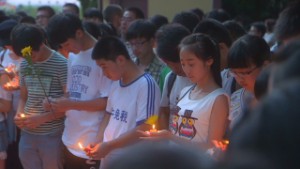 China mourns air crash victims
China mourns air crash victims 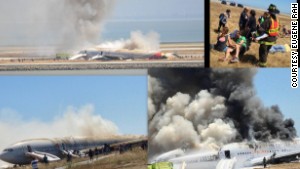 Asiana crash: Rescuing the survivors
Asiana crash: Rescuing the survivors Did pilot have enough 777 experience?
"I think it really is too early to conclude pilot error because there's so much that we don't know," she said. "We have to understand what these pilots knew. We also need to look at how they were flying the airplane."
In a briefing Monday, Hersman told reporters the plane was flying too slowly as it approached the runway. Specifically, the jet was going 118 knots (136 mph) as it approached the runway and as low as 103 knots (118 mph) seconds before the crash -- slower than the 137 knots (157 mph) it should have been going, a difference that's spurred some analysts to conclude pilot error was to blame.
Given its speed, onboard systems warned the crew that the plane was about to stall four seconds before the crash, Hersman said.
Typically, such a warning would prompt a pilot to lower the plane's nose and increase power, but the plane was too close to the ground to take such action. One-and-a-half seconds before impact, the crew called for a "go-around," meaning they wanted to abort the landing and go around in the air to try to make another landing, according to Hersman.
First responders describe eerie, chaotic moments after crash
The Air Line Pilots Association, for a second straight day on Tuesday, criticized what it called the "NTSB's release of incomplete, out-of-context information" that "has fueled rampant speculation about the cause of the accident." It questioned whether some tools were available to the crew, claiming, for instance, that the "Instrument Landing System, a critical aid to pilots, (was) out of service."
"Without the full body of facts surrounding a catastrophic event, partial or incomplete information can lead to erroneous conclusions and, in turn, skew the perception of individuals' behavior," the pilots union said in its Tuesday statement. "This could then lead to misguided assessments of the crew's intentions and actions."
Hersman disputed the union's claims Tuesday on CNN, saying the agency believes that transparent release of information is crucial.
"We believe that it is always better to put out the correct information and factual information so that bad information is not able to propagate," she said.
How does an air crash investigation work?
CNN's Michael Pearson and Greg Botelho contributed to this report.